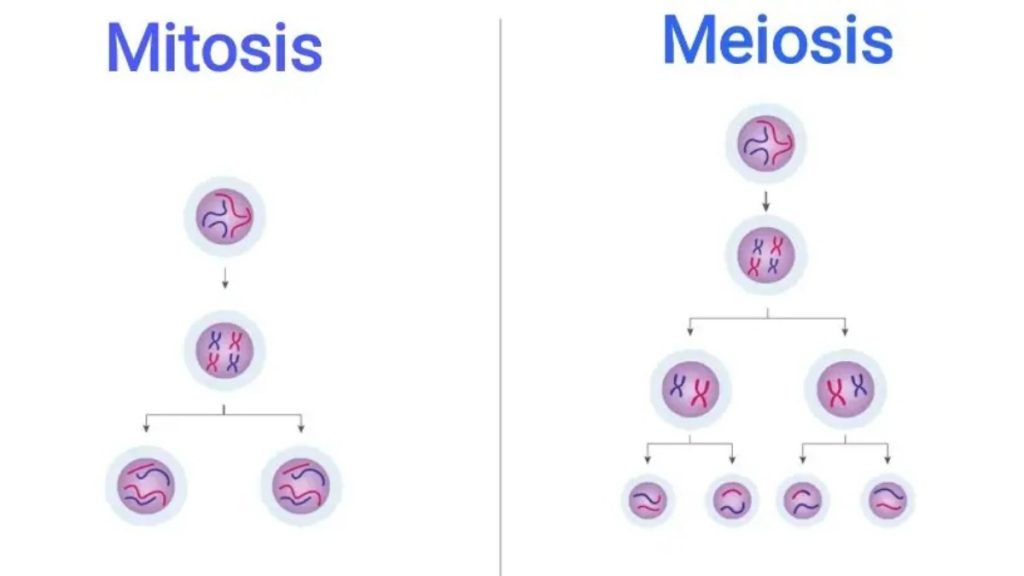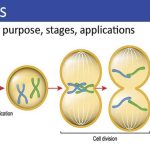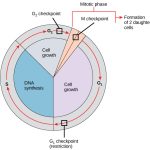What are the big ideas here? There are two cell divisions. Mitosis has one division and meiosis has two divisions. You still have to remember PMATI, but now you do it twice. You also need to remember that four cells are created where there was originally one. That’s four (4) cells with half of the amount of DNA needed by a cell. When a cell goes through meiosis, it’s not concerned about creating another working cell.
Meiosis happens when it’s time to reproduce an organism. The steps of meiosis are very simple. When you break it down it’s just two PMATI’s in a row. Scientists say Meiosis I and Meiosis II, but it’s just two PMATIs. The interphase that happens between the two processes is very short and the DNA is not duplicated.
As we said, meiosis happens when it’s time to reproduce. Meiosis is the great process that shuffles the cell’s genes around. Plants do it, animals do it, and even fungi do it (sometimes). Instead of creating two new cells with equal numbers of chromosomes (like mitosis), the cell does a second division soon after the first.
That second division divides the number of chromosomes in half. When you have half the number of chromosomes, you are called a haploid cell. Haploid means half the regular number. Diploid is the opposite (two strands). Normal cells are considered to be diploid cells.
Step One
MEIOSIS I: This is basically like the PMATI of a regular mitosis. Pairs of chromosomes are lined up at the center of the cell and then pulled to each side. Meiosis is a bit different because there something called crossing-over happens with the DNA.
This crossing over is an exchange of genes. The genes are mixed up, not resulting in a perfect duplicate like mitosis. The cell divides, leaving two new cells with a pair of chromosomes each. Normally the cell would begin to go about its business of living and slowly duplicate the chromosomes for another mitotic division. Since this is meiosis, there is a very short interphase and division begins again.
Step Two
MEIOSIS II: In Prophase II the DNA that remains in the cell begins to condense and form short chromosomes. Each chromosome pair has a centromere. The centrioles also begin their journey to opposite sides of the cell. In Metaphase II all of the chromosomes line up along the center of the cell and the centrioles are in position for the duplication. Anaphase II shows the chromosomes split and move to opposite sides of the cell. Each one splits into two pieces. They don’t divide up the DNA between the new cells; they split the DNA that exists. Each daughter cell will get one-half of the DNA needed to make a functioning cell.
Telophase II shows the DNA completely pulled to the sides and the cell membrane begins to pinch. When it’s all over, you are left with four haploid cells that are called gametes. The eventual purpose of the gametes will be to find other gametes with which they can combine. When they do, they will form a new organism.


